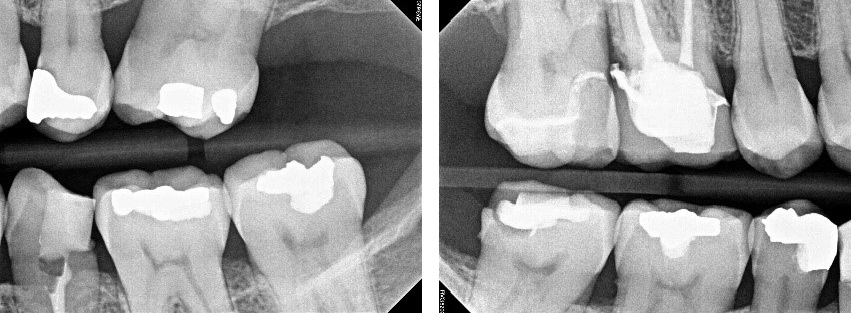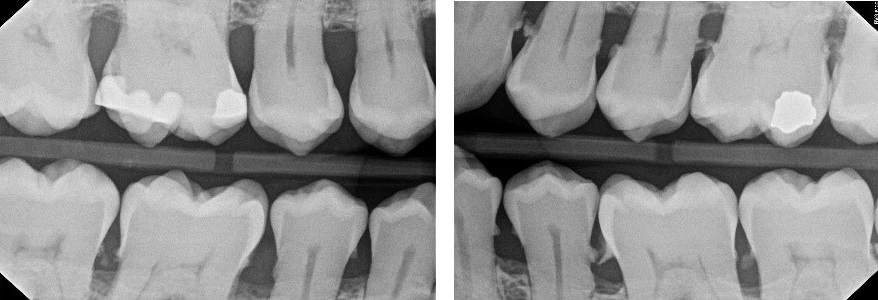Did you know that Gum Disease and Periodontal Disease are one of the most common oral health problems in the world? According to the World Health Organization, about 50% of adults have some form of gum disease, also known as Periodontal Disease. It is a serious condition that can affect not only your teeth and gums, but also your overall health and well-being. In this blog post, we will explore what gum disease is, how it develops, what are the symptoms and risk factors, and how it can be prevented and treated.
Table of Contents
What is Gum Disease?
It is an infection and inflammation of the tissues that support and surround the teeth. These tissues include the gums, the periodontal ligaments, and the alveolar bone. It is caused by the accumulation of plaque and tartar on the teeth and under the gumline. Plaque is a sticky film of bacteria that feeds on sugar and starch in food and produces acids that damage the gums and teeth. Tartar is a hard substance that forms when plaque is not removed by brushing and flossing.
Types of Gum Disease:
Gingivitis and Periodontitis.
Gingivitis is the mild form of gum disease that affects only the gums. It can cause redness, swelling, bleeding, and tenderness of the gums. Gingivitis can be reversed with proper oral hygiene and professional dental care. However, if left untreated, gingivitis can progress to periodontitis, which is the advanced form of gum disease that affects the deeper structures of the teeth.
Periodontitis can cause the gums to pull away from the teeth, forming pockets that harbor more bacteria and infection. Periodontitis can also lead to the destruction of the periodontal ligaments and the alveolar bone, resulting in tooth loss and bone loss.
Stages of gum disease?

Gum disease can be classified into four stages based on the severity of the infection and inflammation:
Stage 1: Gingivitis
This is the earliest stage of gum disease, where only the gums are affected. The gums may appear red, swollen, or bleed easily when brushing or flossing. There is no permanent damage to the teeth or bone at this stage.
Stage 2: Early periodontitis

This is the stage where the infection spreads to the periodontal ligaments that connect the teeth to the bone. The gums may start to recede from the teeth, creating small pockets that trap more plaque and bacteria. The teeth may become slightly loose or shift in position. There may be some minor bone loss at this stage.
Stage 3: Moderate periodontitis

This is the stage where the infection reaches the alveolar bone that supports the teeth. The pockets between the gums and teeth become deeper and more infected. The teeth may become more loose or shift in position. There may be moderate bone loss at this stage.
Stage 4: Advanced periodontitis

This is the final stage of gum disease, where there is severe infection and inflammation of all the tissues around the teeth. The pockets between the gums and teeth become very deep and filled with pus. The teeth may become very loose or fall out. There may be extensive bone loss at this stage.
Symptoms of Gum Disease?
Gum disease can have different symptoms depending on the type and stage of the condition. Some of the common symptoms of gum disease are:
- Red, swollen, or tender gums
- Bleeding gums when brushing or flossing
- Bad breath or bad taste in mouth
- Receding gums or exposed roots
- Tooth sensitivity or pain
- Loose or shifting teeth
- Changes in bite or fit of dentures
- Pus or abscesses around teeth
It is important to note that gum disease can be painless and silent in the early stages, so you may not notice any symptoms until it is too late. That is why regular dental check-ups are essential to detect and treat gum disease before it causes irreversible damage.
Risk factors for Gum Disease and Periodontal Disease?
Gum disease can affect anyone at any age, but there are some factors that can increase your chances of developing it. Some of these factors are:
Smoking or tobacco use: Smoking is one of the most significant risk factors for gum disease, as it reduces blood flow to the gums, impairs healing, and increases plaque and tartar formation.
Diabetes: Diabetes affects your body’s ability to fight infection and control blood sugar levels, which can make you more prone to gum disease.
Hormonal changes: Hormonal changes during puberty, pregnancy, menopause, or oral contraceptive use can make your gums more sensitive and susceptible to inflammation.
Medications: Some medications can affect your saliva flow, which helps wash away plaque and bacteria from your mouth. Some medications can also cause gum enlargement, which can make it harder to clean your teeth and gums.
Poor nutrition: A diet that is low in vitamins and minerals, especially vitamin C, can weaken your immune system and your gums. A diet that is high in sugar and starch can also feed the bacteria that cause gum disease.
Stress: Stress can lower your immune system and make you more vulnerable to infection and inflammation.
Genetic predisposition: Some people may have a genetic tendency to develop gum disease, regardless of their oral hygiene habits.
Prevention of Gum Disease and Periodontal Disease
The best way to prevent gum disease is to maintain good oral hygiene habits, such as:
1) Brushing your teeth twice a day with fluoride toothpaste, using a soft-bristled toothbrush and gentle circular motions. Make sure to brush all surfaces of your teeth, including the chewing surfaces, the inner surfaces, and the outer surfaces. Also brush your tongue to remove bacteria and freshen your breath.
2) Flossing your teeth daily, using a gentle up-and-down motion to clean between your teeth and under your gumline. You can use dental floss, interdental brushes, or water flossers to remove plaque and food particles from hard-to-reach areas.
Using an antibacterial mouthwash, preferably one that contains chlorhexidine or cetylpyridinium chloride, to rinse your mouth after brushing and flossing. This can help kill bacteria and reduce plaque and inflammation.
3) Visiting your dentist regularly, at least twice a year, for professional cleaning and examination. Your dentist can remove plaque and tartar that you cannot remove by yourself, and check for any signs of gum disease or other oral problems. Your dentist can also advise you on the best oral care products and techniques for your specific needs.
In addition to good oral hygiene habits, you can also make some lifestyle changes that can help reduce your risk of gum disease, such as:
1) Quitting smoking or tobacco use, as this can improve your blood circulation, healing, and oral health.
2) Eating a balanced diet that is rich in vitamins and minerals, especially vitamin C, which can boost your immune system and your gums. Avoid foods that are high in sugar and starch, which can feed the bacteria that cause gum disease.
3) Drinking plenty of water, as this can help wash away plaque and bacteria from your mouth and keep your mouth moist.
Managing stress levels, as this can improve your immune system and your mood.
Treatment of Gum Disease and Periodontal Disease
The treatment for gum disease depends on the type and stage of the condition, as well as your overall health and personal preferences. The main goal of treatment is to control the bacterial growth and inflammation that cause gum disease, and to restore the supportive tissues around the teeth. Some of the treatment options for gum disease are:
Nonsurgical Treatments:
These are the first line of treatment for mild to moderate gum disease. They include:
- Scaling and root planing: This is a deep cleaning procedure that involves removing plaque and tartar from above and below the gumline, and smoothing the root surfaces of the teeth to make them less attractive to bacteria. This can help reduce inflammation and shrink the pockets between the gums and teeth.
- Antibiotics: These are drugs that can help fight infection and reduce inflammation. They can be taken orally or applied topically on the gums or in the pockets between the gums and teeth. They can be used alone or in combination with scaling and root planing.
- Antiseptic chips or gel: These are small pieces of material or gel that contain antiseptic agents such as chlorhexidine or doxycycline. They are placed in the pockets between the gums and teeth after scaling and root planing to release their active ingredients over time. They can help kill bacteria and reduce inflammation.
Surgical treatments:
These are reserved for advanced gum disease that does not respond to nonsurgical treatments. They include:
- Flap surgery: This is also known as pocket reduction surgery. It involves lifting back the gums to expose the roots of the teeth and removing any plaque and tartar. The gums are then sutured back in place, reducing the depth of the pockets between the gums and teeth.
- Soft tissue grafts: This involves taking a piece of tissue from another part of your mouth or from a donor source and attaching it to the areas where the gums have receded or thinned. This can help cover exposed roots, reduce sensitivity, prevent further recession, and improve appearance.
- Bone grafts: This involves taking a piece of bone from another part of your body or from a synthetic source and placing it in the areas where bone has been lost due to gum disease. This can help stimulate new bone growth and support the teeth.
Guided tissue regeneration: This involves placing a special membrane between the bone graft and the gum tissue to prevent the gum tissue from growing into the bone.
Know more about Soft Bristle Toothbrush – A Must Have for Your Oral Health, click here.
Conclusion
Gum disease is a serious oral health problem that can affect your teeth, gums, and overall health. It can be caused by various factors, such as plaque and tartar buildup, smoking, diabetes, hormonal changes, medications, poor nutrition, stress, or genetic predisposition. It can have different symptoms, such as red, swollen, or bleeding gums, bad breath, tooth sensitivity, or tooth loss. It can also progress from mild to severe stages, such as gingivitis and periodontitis. The good news is that gum disease can be prevented and treated with proper oral hygiene habits and professional dental care. By brushing and flossing your teeth daily, using an antibacterial mouthwash, visiting your dentist regularly, and making some lifestyle changes, you can keep your gums healthy and strong. If you have any symptoms or concerns about gum disease, do not hesitate to seek professional dental care as soon as possible. Your dentist can diagnose your condition and recommend the best treatment options for you, whether they are nonsurgical or surgical. Remember, your gums are the foundation of your smile and your health. Take good care of them and they will take good care of you.

5 thoughts on “Gum Disease and Periodontal Disease : Types, Stages, and Treatment Options”